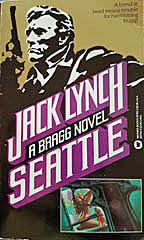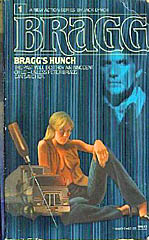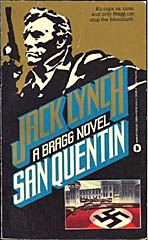Mon 1 Aug 2016
Mike Nevins on the Early GEORGES SIMENON.
Posted by Steve under Authors , Bibliographies, Lists & Checklists , Columns[2] Comments
by Francis M. Nevins
Shortly before he created the immortal Maigret, and while he earned his vin rouge and calvados cranking out pulp novels at the rate of one every few days, Georges Simenon (1903-1989) wrote three series of short stories, thirteen tales apiece, which first appeared, under the pseudonym Georges Sim, in the weekly magazine Détective, each in two parts, with the problem laid out in one issue and the solution, along with a new problem, two weeks later.
In 1932, with the hugely successful Maigrets being published by the house of Arthéme Fayard at the rate of one a month, Fayard offered the three series from Détective in book form: LES 13 MYSTÉRES, LES 13 ENIGMES, and LES 13 COUPABLES. Thanks to some meticulously detailed French websites, exact data as to all 39 stories are not far to seek.
LES 13 MYSTÉRES
L’affaire Lefrançois 21 Mar & 4 Apr 1929
Le coffre-fort de la SSS 28 Mar & 11 Apr
Le dossier no. 16 4 Apr & 11 Apr
Le mort invraisemblable 11 Apr & 25 Apr
Le vol du lycée du B… 18 Apr & 2 May
Le dénommé Popaul 25 Apr & 9 May
Le pavillon de la Croix-Rousse 2 May & 16 May
La cheminée du Lorraine 9 May & 23 May
Les trois Rembrandt 16 May & 30 May
L’ écluse no. 14 23 May & 6 Jun
Les deux ingénieurs 30 May & 13 Jun
La bombe de l’Astoria 6 Jun & 20 Jun
Le tabatiére en or 13 Jun & 27 Jun
The protagonist of these thirteen was Joseph Leborgne, a relatively colorless character who solves cases solely by reading newspaper clippings. Those of us who aren’t fluent in French can judge the series only by the three tales that were translated by Anthony Boucher and published in early issues of Ellery Queen’s Mystery Magazine: “The Three Rembrandts†(September 1943), “The Safe of the S.S.S.†(October 1946), and “The Little House at Croix-Rousse†(November 1947).
After a summer hiatus of about two and a half months, Détective launched a second 13-story series, this one featuring a Paris police official known only as G.7, who apparently has jurisdiction over crime puzzles anywhere in France.
LES 13 ENIGMES
G.7 12 Sep & 26 Sep 1929
Le naufrage de Catherine 19 Sep & 3 Oct
L’esprit démenageur 26 Sep & 10 Oct
L’homme tatoué 3 Oct & 17 Oct
Le corps disparu 10 Oct & 24 Oct
Hans Peter 17 Oct & 31 Oct
Le chien jaune 24 Oct & 7 Nov
L’incendie du parc Monceau 31 Oct & 14 Nov
Le mas Costefigues 7 Nov & 21 Nov
Le ch teau des disparus 14 Nov & 28 Nov
Le secret de fort Bayard 21 Nov 7 5 Dec
Le drame du Dunkerque 28 Nov & 12 Dec
L’inconnue de l’Étretat 5 Dec & 19 Dec
This collection too can be judged by Frenchless readers only on the basis of the three stories from it that Boucher translated and Fred Dannay published in EQMM: “The Secret of Fort Bayard†(November 1943), “The Tracy Enigma†(May 1947), and “The Chateau of Missing Men†(August 1948).
The original French titles of two of these three are easy to figure out but “The Tracy Enigma†is impossible — unless you read Boucher’s version, as I did recently, and discover that it’s about the body of a drowned girl that disappears from the shed where it was being kept; in French, a corps disparu.
The third and final series began running in Détective after a break of almost three months.
LES 13 COUPABLES
Ziliouk 13 Mar & 27 Mar 1930
Monsieur Rodrigues 20 Mar & 3 Apr
Madame Smitt 27 Mar & 10 Apr
Les “Flamands†3 Apr & 17 Apr
Nouchi 10 Apr & 24 Apr
Arnold Schuttringer 17 Apr & 1 May
Waldemar Strvecki 24 Apr & 8 May
Philippe 1 May & 15 May
Nicolas 8 May & 22 May
Les Timmermans 15 May & 29 May
Le Pacha 22 May & 5 Jun
Otto Müller 29 May & 12 Jun
Bus 5 Jun & 19 Jun
This one introduces M. Froget, a Paris juge d’instruction, or examining magistrate, who questions a prisoner before him in each tale. Boucher translated and Fred published four of the stories: “The Case of Arnold Schuttringer†(November 1942), “Affaire Ziliouk†(May 1944), “The Case of the Three Bicyclists†(July 1946), and “Nouchi†(December 1948). In French the third tale is “Les Timmermansâ€; the original titles of the others are obvious.
With COUPABLES we are not dependent on ancient issues of EQMM. In 2002 the entire collection was published by Crippen & Landru, in a translation by Peter Schulman, as THE 13 CULPRITS. Schulman describes Boucher’s translations as “very creative, but sometimes [they] took liberties with Simenon’s writing. I have stuck quite loyally to the text, and tried to preserve Simenon’s elegant, sometimes labyrinthine, formal sentence structures….â€
After reading this comment I was struck with the urge to compare Schulman’s translations with Boucher’s. The first thing I found could certainly be classified as taking a liberty with Simenon’s prose. Boucher’s version of the Arnold Schuttringer story begins with a description of Froget supposedly penned by Simenon himself. “I have been a guest in his home on the Champ du Mars, and I should like to attempt a personal impression. No man has ever more thoroughly crushed me, more completely undermined my opinion of myself, than M. Froget.â€
Turning to the Crippen & Landru book, we find that there is no such passage in “Arnold Schuttringer.†Did Boucher have the chutzpah to write it himself? No, he simply borrowed it from the first story in the book, “Ziliouk,†which he translated for EQMM a little later. Since “Schuttringer†was the first Simenon short story to appear anywhere in English, Boucher obviously felt that its protagonist should be introduced by this passage from the first story to appear in French.
In most respects the translations differ only slightly. Boucher: “Arnold Schuttringer never took his large bulging eyes off the magistrate. They inspired dislike, those eyes, even a strange revulsion.†Schulman: “Arnold Schuttringer did not take his big goggle eyes off him. His eyes inspired a certain amount of ill will, even a strange kind of revulsion.â€
One could spend many hours and pages comparing translations this way if the game were worth the candle. But at the very end of the story there’s one difference too intriguing to pass over. Simenon or whoever the narrator is supposed to be tells us, in Boucher’s translation: “Across these lines [in Froget’s case file] I have read a note written later in red ink: ‘Died at Salpetri re Hospital of general paresis, a year after acquittal for lack of criminal responsibility.’â€
In Schulman’s: “I have read a little note that was later inserted between the lines in red ink: ‘Death at the Salpetri re old age home, of a general paralysis a year after having been acquitted for lack of criminal responsibility.’†This makes no sense. Schuttringer is not an old man; in fact we’re told early in the story that he’s thirty. Even worse, Schulman inserts a footnote that the Salpetri re “housed aged women, and also served as a mental institution for women.†Certainly Arnold Schuttringer was not a woman! Could the subject of Froget’s jotting have been Schuttringer’s female accomplice? But why would monsieur le juge put a sentence about her in a file concerning Schuttringer?
This dilemma forced me to turn for help to mon vieux ami Jean-Pierre Google. The Salpêtriére hospital — named for saltpeter, an ingredient of gunpowder—was founded in 1656 by King Louis XIV on the site of an old gunpowder factory. It served mainly as a prison for prostitutes and a holding place for the mentally disabled, the criminally insane, and epileptics.
By the time of the French Revolution it had become the world’s largest hospital. Its original inmates were exclusively women, but during the 20th century Prince Rainier of Monaco was treated there and philosopher Michel Foucault died there. Among the women who died there are singer Josephine Baker, who was one of Simenon’s legion of lovers, and Princess Diana. Exactly when the hospital opened its doors to men I haven’t been able to determine.
The first of the 13 coupables to appear before M. Froget is Ziliouk, who in Schulman’s translation is described as “a Hungarian (or Polish, or Lithuanian, or Latvian, nobody knew exactly) Jew who…had already been expelled from five or six countries in Europe.â€
No doubt this is a close translation of what Simenon had written. But if we look at Boucher’s rendition from the May 1944 EQMM, we find that a single word has been omitted. “He was a Hungarian…or Polish, or Lithuanian, or Latvian. No one knew precisely;…he had already been deported from five or six countries.â€
Another liberty with Simenon’s text? Yes indeed. But, knowing that Boucher detested and despised anti-Semitism, and that he was translating the story at a time when Jews were being slaughtered by the millions in the Holocaust, wasn’t the liberty justified? In his shoes, what would you have done?


